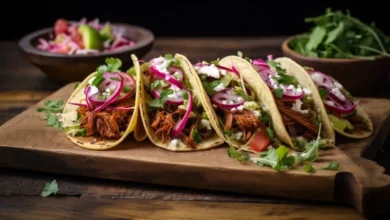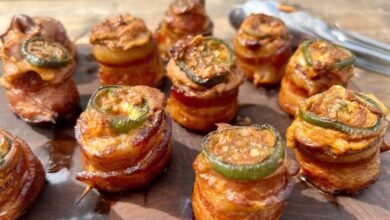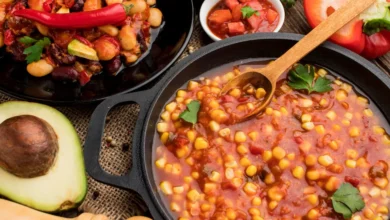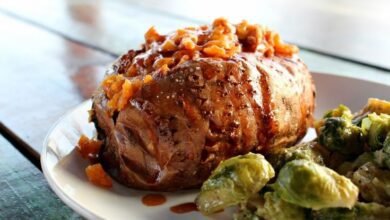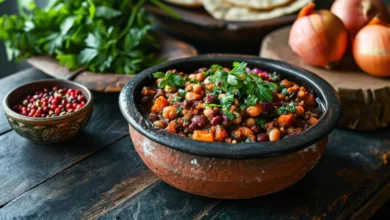Crafting Homemade Beef Rub Blends With Signature Spices
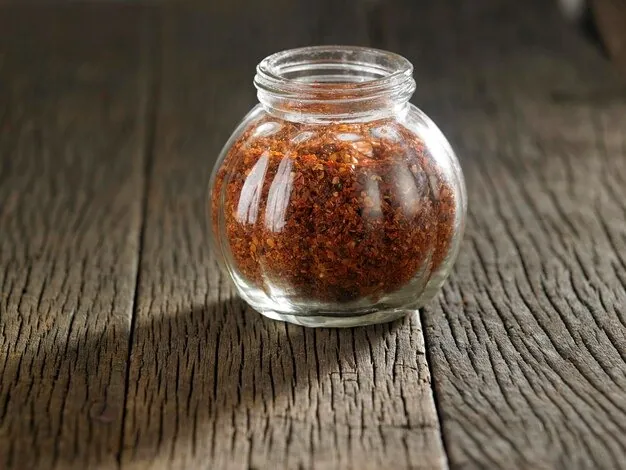
When I began my journey as a backyard grill master, I relied heavily on store-bought seasoning rubs to flavor the many meats I would love to grill. Over time, I came to appreciate the simple yet seriously awesome mix of spices that makes for the best around. A well-marbled rib eye, burgers, meatballs, meatloaf combination of salt, pepper rub, steak, cut, seasoning, flavors, round out the savory, peppery warmth, and beef. While this basic salt, pepper, base, flavor alone complements well, I also enjoy spiking it up with a fair share of red pepper flakes, cayenne pepper, heat to add an extra. No rub, favorite, steak rub if it’s gracing a thick-cut, grilled, or called, this rub always enhances the natural of it. Feel to mix it up to your taste and use It for grilling, smoking, culinary magic or any you upon in your kitchen – it simply best everything.
Contents
What’s a Rub?
There are generally two kinds of rubs – dry and wet. A dry rub uses herbs and spices that are simply mixed together and then directly applied to the surface of the meat. These are easy to make and provide intense flavor without being overpowering.
A wet rub incorporates wet ingredients like soy sauce, oil to form a paste. Common acids found in wet rubs include lemon, lime, orange juice. Olive oil and other oils depends on the specific recipe.
These are usually applied to the meat before cooking or even hours before to pump up the flavor. Moreover, the wet ingredients allow the spices to marinate or soak into the beef. Both dry and wet rubs are effective ways to season meat before grilling or smoking.
Nutrition Information
| Nutrients | Amount | % Daily Value |
| Calories | 207 kcal | 10% |
| Carbohydrates | 51 g | 17% |
| Protein | 3 g | 6% |
| Sodium | 22943 mg | 998% |
| Potassium | 307 mg | 9% |
| Fiber | 4 g | 17% |
| Sugar | 36 g | 40% |
| Vitamin A | 1970 IU | 39% |
| Vitamin C | 1.2 mg | 1% |
| Calcium | 70 mg | 7% |
| Iron | 2.2 mg | 12% |
Homemade Beef Rub
Course: Smoked CuisineCuisine: American12
servings5
minutes207
kcal5
minutesMaking your own homemade beef dry rub tastes so much better than what you can buy in the store. Pre-made rubs contain unnecessary preservatives, while a homemade version allows for fresher, more flavorful seasonings. It’s also quite easy to make and allows you to personalize it to your own taste. You’ll definitely want to give this a try!
Ingredients
2 Tablespoons fresh cracked black pepper
2 Tablespoons kosher salt
2 Tablespoons paprika
1 Tablespoon crushed red pepper flakes
1 Tablespoon crushed coriander seeds (not ground)
1 Tablespoon garlic powder
1 Tablespoon onion powder
1 Tablespoon white sugar
2 Teaspoons cayenne pepper
4 Teaspoons dried oregano
2 Teaspoons chili powder
2 Tablespoons dry mustard
1 pinch thyme
Directions
- Gather the necessary ingredients beforehand, as it makes the actual mixing way more organized. Everything is included and measured ahead of time, so there’s no stress when you’re ready to start herbs and spices together.
- Measure and separate each prep bowls, piles to avoid incorrectly fix any potential mistake quickly.
- Once all the ingredients are laid out, mix, add and combine the dry spices in a bowl. You can gently whisk together until fully rub consistency.
- Transfer to an airtight glass jar and seal with a tightly fitted lid. Give it all a good shake to ensure everything is well using. Now you have homemade beef magic!
Notes
- Storage: Seal it tightly in an airtight container like a glass jar and store in a cool, dry place for up to six months.
How to Apply a Dry Rub?
Applying the dry rub is simple – just mix the dry ingredients together ahead of time, then apply the spice mixture generously all over the surface of the beef. Aim for about two tablespoons per pound of meat to really get into all the nooks and crannies, allowing the meat to truly soak up the layer of flavors. Be liberal to ensure each flavorful piece is well seasoned.
For extra saturation time, place the seasoned beef in a Ziploc bag and wrap tight or cover with plastic wrap. Refrigerate for longer – let the flavors soak by storing in the refrigerator anywhere from 30 minutes to 3 hours before cooking. There’s no need to get too scientific about the timing – just try different rubs at different saturation points to see what you like best.
Storage Instructions
Once your homemade beef dry rub is complete, seal it tightly in an airtight container like a glass jar and store in a cool, dry place for up to six months. Properly stored, it will retain maximum freshness and flavor for many future steaks, roasts or kabobs to come! Just be sure the lid is securely fastened to prevent drying out.
Tips
- Being careful when altering the ingredients can affect how the whole rub tastes, so be careful when adjusting the basic recipe. For example, reducing the cayenne pepper is ok if you don’t enjoy overly spicy food.
- For best coverage, pat the beef dry with paper towels before applying the dry rub – this helps it disperses evenly rather than slide off the meat.
- As mentioned before, always keep any leftover beef dry rub sealed tightly in an airtight container in a cool, dry place for up to six months for maximum freshness.
Substitutions and Modifications:
- You can substitute the white sugar called for in the dry rub with brown sugar. Using a small amount of sugar will still give the rub a sweet flavor that helps bring out the great flavor of the spice blend.
- If using the dry rub for meat that will be grilled or smoked, you can substitute the kosher salt called for with coarse smoked sea salt. This will add a smoky flavor that complements the cooking method.
More Favorite Rubs:
1. All Purpose Rubs:
- Dalmatian Rub: The “Dalmatian” (salt and pepper) rub is a classic choice if you want a rub that will tenderize the meat and allow the natural flavors to shine through. It’s a simple mix of kosher salt and a small amount of freshly ground black pepper.
- Dry Rub: For an easy all-purpose dry rub, try blending together equal parts ground cumin, dried oregano, garlic powder, onion powder, chili powder, kosher salt and sweet paprika, along with a small amount of light brown sugar. This mix is extremely versatile, and anything it seasons is sure to turn out great on the grill.
2. Steak & Hamburger Rubs:
- Basic All-Purpose Steak Seasoning: Mix equal parts kosher salt, garlic powder, onion powder, and cracked black pepper.
- Sweet & Spicy Hamburger Rub: Mix paprika, freshly ground black pepper, dark brown sugar, chili powder, onion powder, sea salt, and cayenne pepper.
- Cocoa Rub: Mix cocoa powder, salt, brown sugar, garlic powder, onion powder, ground cumin, chili powder, and ground black pepper.
- Carolina BBQ Rub: Mix salt, sugar, brown sugar, ground cumin, chili powder, ground black pepper, cayenne pepper, and paprika.
- Montreal Steak Seasoning Rub: Mix kosher salt, ground black pepper, paprika, onion powder, garlic powder, ground coriander, dill seeds, and crushed red pepper flakes.
3. Roast & Brisket Rub:
- Roast Dry Rub: Mix garlic powder, salt, ground black pepper, chili powder, and cumin.
- Beef Brisket Rub: Mix white sugar, brown sugar, salt, ground black pepper, paprika, and garlic powder.
- Sugar Rub: Sugar gets a bad rap, but it can create a completely tasty crust on the exterior of meat like steak when used to rub thin layers. Next time you grill steak, try a steak rub with brown sugar or white to end up with a five-star steakhouse quality crust and crust.
How to Use This Beef Rub?
Using beef rub for brisket, Smoke the Brisket for a delectable flavor infusion.
Enhance the flavor of your Smoked Mississippi Pot Roast with a delectable roast beef rub recipe, elevating it to a culinary masterpiece.
Give these smoked pork butt burnt ends, smoked meatball subs, smoked pork belly pinwheels, smoked atomic buffalo turds, and smoked BBQ meatballs a flavorful twist with this easy-to-follow simple beef rub recipe.
Secret About Beef Rubs
It almost goes without saying that you’ll get better cooking results if your dry rub rubs are made with the freshest ingredients possible. I recommend buying spices from local specialty spice shops whenever you can. Their bulk herbs and spices will work so much better than what you’ll find in the grocery store aisle, where spices may not be fresh and don’t have the same flavor profile. Opt for small-batch artisan producers of spices for maximum beef dry rub flavor.
Conclusion
Creating your own homemade beef dry rub allows you to customize the flavors to perfectly suit your preferences. With just a few minutes of mixing herbs and spices, you’ll transform ordinary steaks, roasts and kabobs into restaurant-quality meals. By selecting the freshest ingredients and experimenting with different combinations, you can develop unique blends that will quickly become family favorites. With some basic recipes and techniques, anyone can start crafting succulent, savory beef dishes by pairing them with homemade dry rubs.
Frequently Asked Questions (FAQs)
What is the best seasoning for beef?
A classic seasoning for beef is salt and pepper. Garlic powder, onion powder, paprika and chili powder also add big flavors. It depends on the cut and cooking method, but salt and pepper is always a good starting point.
How long do you leave a rub on beef?
It’s best to apply a rub at least 30 minutes before cooking, but overnight is even better to allow the flavors to penetrate. The longer it sits, the more flavor will be absorbed but avoid more than 24 hours.
What is a rub for meat?
A rub is a blend of dry spices and herbs used to season meat before cooking. The key ingredients add flavor by contact, and some rubs form a crust during cooking. Rubs tenderize and intensely flavor the meat.
What is steak rub made of?
Many steak rubs contain a combination of salt, pepper, paprika, garlic powder and onion powder. Some also add brown sugar, chili powder or cayenne pepper. The spices form a flavorful crust and intensify the natural beefy flavor when seared onto steaks.
Will dry rub burn?
There is a risk of burning if too much rub is applied or during very high heat searing. Generally a thin, even coating won’t burn but watching closely during the first few minutes of cooking and reducing the heat if it begins to blacken can prevent burning.


